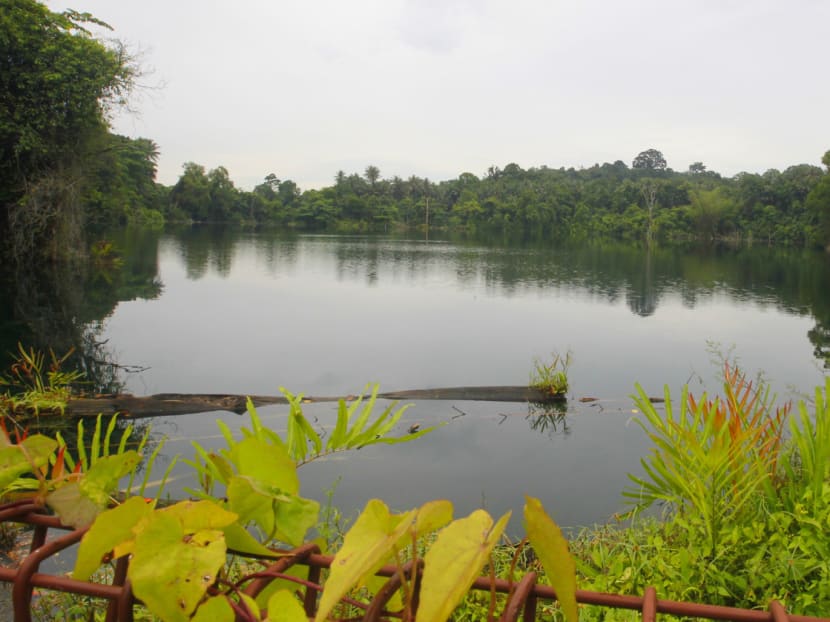Ubin ‘deserves higher level of protection’
SINGAPORE — A nature group has called for Pulau Ubin to be given the same level of protection as a nature reserve, given the concentration of rare and endangered wildlife found on the offshore island.
With much knowledge gained since the 1990s on the island’s biodiversity, it is about time that Ubin be accorded a stronger level of conservation protection, the Nature Society (Singapore) said in a position paper submitted to the authorities last month.
The paper is its response to the Ubin Project, an ongoing effort to gather suggestions on enhancing Ubin’s natural environment and protecting its rustic charm.
The island is officially a “nature area”, which is defined in the Singapore Green Plan as an area recognised for its rich biodiversity, but can be developed if the need arises, the paper stated.
Under the latest Urban Redevelopment Authority Master Plan, much of Ubin is classified as “open space”, much like the Bukit Timah and Central Catchment nature reserves. But unlike them, its protection has no statutory power insofar as de-gazetting it requires legislative or parliamentary approval, the Nature Society stated.
It called for a formation of an independent committee of experts and stakeholders to review Ubin’s land-use status as a whole.
Should it be determined that Ubin deserves the status of a nature reserve, the independent committee can also weigh in on which portions of Ubin to include. Areas rich in biodiversity, including the Outward Bound Singapore territory, should be integrated and managed by the National Parks Board (NParks).
The 18-page paper was submitted to NParks, Ministry of National Development (MND) and Urban Redevelopment Authority on Oct 27.
NParks’ conservation director Wong Tuan Wah told TODAY that the Nature Society’s proposals would be considered together with other ideas received through platforms, such as the Ubin Project’s microsite and symposiums. The society is part of the Friends of Ubin network formed earlier this year — comprising members from various heritage and nature groups, volunteers and the Ubin community — to serve as one platform for the gathering of ideas, he added.
Suggestions made by the Nature Society include capping the number of taxis and vans on the island and introducing electric small vehicles for less mobile visitors, curbing coastal erosion on the island’s northern shoreline and restricting mountain biking to areas that are less ecologically sensitive.
The abandoned rubber estates and durian orchards should also be left alone as creatures, such as woodpeckers, bulbuls, junglefowl and the greater mousedeer, have ventured into these areas for cover and to forage, as the wild undergrowth continues to become denser.
Regular nature walks conducted by volunteers could be offered in Ubin, but mass activities, such as marathons and cycling races, should be disallowed, said the Nature Society.
Also highlighted in the paper was Ubin’s flora and fauna. It has the largest intact portion of mangroves in Singapore, covering 149ha, and its diverse wildlife habitats include mangrove and tidal mudflats, secondary forests, as well as marine habitats such as seagrass beds.
Some species of plants, birds, reptiles and butterflies are only found on Ubin, such as the Brown Wood Owl and the White-Bellied Blind Snake.
As an increasing number of people visit Ubin, the current lack of clear demarcation between recreational zones and important nature areas will adversely impact natural habitats and wildlife, the society said.
Earlier this month, it was reported that at least half of 500 people surveyed online by the MND wanted to see more public facilities — including some amenities found on the mainland — such as shelters and cycling trails.
In 1992, the authorities approved a plan to reclaim part of what is now the Chek Jawa Wetlands, one of Singapore richest eco-systems. However, in 2001 when the reclamation was set to start, nature lovers and the public appealed for its preservation.
Following public consultations, the Government announced in the same year that the reclamation works would be deferred for as long as Pulau Ubin is not required for development.
The public can continue sharing their ideas on Ubin at https://ideas.ecitizen.gov.sg/a/pages/ubin.







